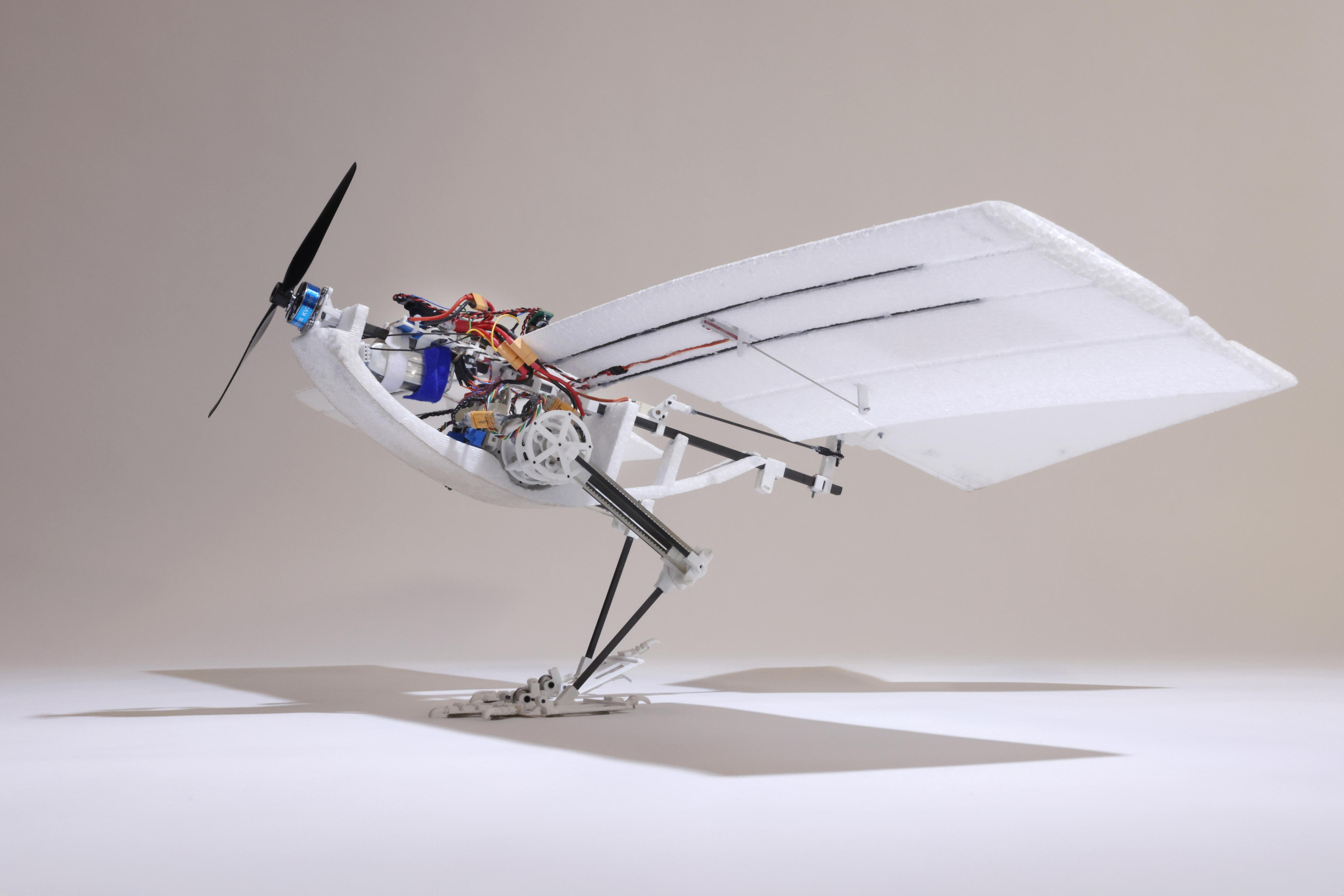Media release
From:
Engineering: Bird-inspired leg helps robots to jump into flight
RAVEN, a robot with bird-inspired legs can jump into flight, walk on the ground and hop over obstacles. The design, described in Nature this week, could enable the deployment of aircraft in complex terrains.
The hindlimbs of birds have a range of functions, such as walking, hopping, leaping, and jumping take-off into flight. These capabilities could be useful for aerial robots, but building systems with multiple modes of locomotion is challenging as the systems can become too mechanically complex or heavy to fly properly.
Won Dong Shin and colleagues overcome these challenges to develop RAVEN (Robotic Avian-inspired Vehicle for multiple ENvironments), a robot with limbs that can move like those of a bird. The limbs have structures that mimic a hip, ankle and foot, although the design is not as complex as the multisegmented leg anatomy seen in birds. RAVEN can jump into take off, just like a bird, and this is shown to contribute substantially to initial flight take-off speed and is more energy efficient than taking off without a jump. The leg design also enables a range of locomotion gaits such as walking, hopping over a gap, and jumping onto an obstacle.
Although further optimization of the system is needed, the leg design in RAVEN could inspire the design of more versatile machines that can use multiple locomotion modes, the authors conclude.
Multimedia





 International
International



